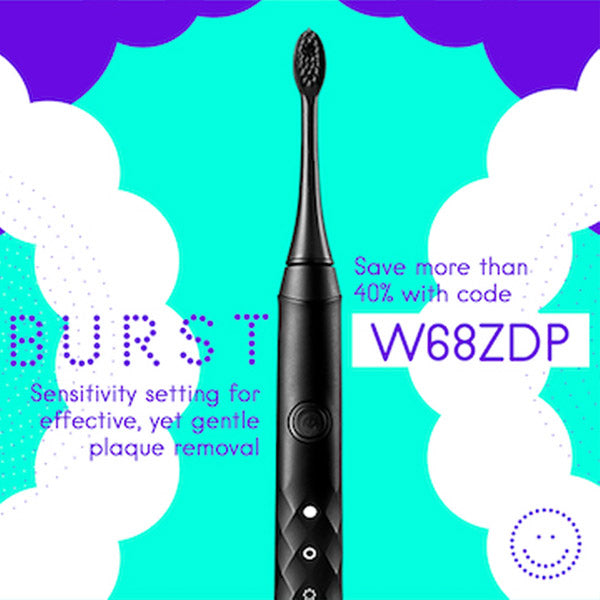What is Osteoradionecrosis of the Jaw?
Our sincere gratitude to Dr. Lauren Levi for sharing her time and talents with us at Side Effect Support!
Osteoradionecrosis (ORN) is a serious and devastating long-term side effect of radiation therapy. The definition of osteonecrosis of the jaw has changed throughout the years and remains unclear given our limited knowledge of ORN. Nonetheless, currently, most consider ORN a condition characterized by the presence of exposed bone, which fails to heal after high-dose radiation (greater than 50-60 Gy). Although the time frame at which ONJ occurs is still unclear, it is considered a long-term side effect of radiation therapy, occurring between six months to one year after treatment, and the risk of ORN increases over time.
Prevalence
While the prevalence of ORN is difficult to ascertain, most literature estimates that it is approximately 5 percent. ORN is most often associated not with direct damage to the bone, but rather with trauma to tissues overlying the bone, including surgical procedures such as extractions. The condition has been found to occur more frequently in the mandible than in the maxilla, possibly because of the limited vasculature in the mandible. For some patients, however, ORN occurs spontaneously.
Wait, so how does this happen?
Good question. The pathophysiology is still not well understood, yet there are several postulated theories. Probably, the most popular and well-known hypothesis was proposed by Marx in 1983. Marx's 3-H hypothesis states that radiation results in triad of tissue hypoxia, hypocellularlity and hypovascularity, which leads to
tissue breakdown. However, currently, many support the radiation-induced fibrosis hypothesis. In this complex process, radiation induces cellular damage as well as an acute inflammatory response, and alters the normal functioning and turnover of osteoclasts and osteoblasts.
How do we diagnose ORN?
Diagnosis is not as straightforward as one might imagine. The classic clinical presentation involves exposed bone at an irradiated site. Symptoms usually include an area of exposed dead bone (sequestra), often accompanied by an ulceration that exhibits delayed healing or simply does not heal. In addition, patients may complain of fetor oris (also known as halitosis), numbness, or chronic pain. The area may also present swollen or as a fistula. Severe cases include cortical bone fracture and/or an oro-antral communications.
If the exact radiation dosage is not known, what are some signs that an area has received high doses of radiation?
There are several signs associated with high doses of radiation therapy to the head and neck. These include loss of facial hair growth, profound xerostomia (dry mouth), tissue induration, and taste loss. Patients sometimes experience mucosal telangiectasia, characterized by small dilated blood vessels along the mucosa
inside the mouth. Often, a quick marker of where the radiation was delivered can be detected by noticing where a man's beard line has stopped.
What are the risk factors?
Risk factors include high doses of radiation (50-60 Gy or more), the type of radiation delivered, and the anatomical location of the radiation. Although ORN occurs spontaneously, 60 percent of cases are linked to trauma to the jaw such as extractions or periodontal surgery. Thus, dentate patients are at an increased risk of developing ORN. Additionally, tobacco and alcohol usage are associated with an increased risk of ORN. ORN has a predilection for the male sex. Other risk factors include the use of vasoconstrictors such as epinephrine and poor health or nutritional status. The risk of ORN actually increases over time and is directly related to the dosage of radiation received. In other words, the higher the dosage, the greater the risk of developing ORN.
How is ORN treated?
Maintaining good oral hygiene cannot be stressed enough, and regular dental recall visits are key. Visiting a dentist regularly and frequently will minimize a patient's risk for developing dental decay and thus the risk of dental infection and ORN. Before a patient receives radiation therapy, all questionable teeth should be extracted or restored at least 14 to 21 days before receiving radiation treatment. Post-radiation dental extractions should be strongly avoided. As stated earlier, the mandible presents a greater risk for developing ORN than the maxilla, and posterior sites present a greater risk than anterior sites; in other words, the lower back teeth present the highest risk for developing ORN, while the upper front teeth present the lowest risk.
Ideally, no extractions should be performed in the field of radiation because radiation dosage is linked to ORN (i.e. greater than 50-60 Gy). While extractions are absolutely advised against, some studies indicate that if an extraction is performed on a post-radiation patient, the use of prophylactic antibiotics may minimize bacterial invasion to the extraction site. The protocol includes administering penicillin VK to patients before and after the procedure.
Always minimize trauma when possible. If a tooth can be saved, it is ideal to save the tooth and perform root canal therapy over an extraction. If an extraction is performed, avoid using periosteal elevators, irrigate the site with saline, eliminate bony spicules, and try to create primary closure.
Given their increased risk for dental decay, patients should be prescribed a neutral sodium fluoride 1.1 percent (5,0000 PPM fluoride) toothpaste and apply this toothpaste nightly.
When radiation hits metal in a person's mouth, the radiation scatters and may be associated with an increased risk for developing mouth sores. Thus, it is often recommended that patients wear custom radiation mouth guards when undergoing radiation if the metal in their mouth will be in the field of the radiation. The mouth guards do not eliminate the risk of developing mouth sores or ORN, but may help reduce the risk by preventing the soft tissue from directly touching the intraoral metal.
Minimizing hypovascularity after radiation treatment is also believed to be linked to a reduced risk of developing ORN. This means that when administering local intraoral anesthesia, an anesthetic with low or no epinephrine should be used.
Conservative measures, such as irrigating the exposed bone with saline or antimicrobial rinses (chlorhexidine gluconate 0.12 percent), are recommended.
Additionally, it is important to direct patients on how to irrigate properly. Additional conservative measures include allowing the bony sequestra to exfoliate while epithelialization occurs underneath. In certain cases, however, surgical resection is indicated.
Hyperbaric oxygen: what's that about?
There is some debate over the administration of hyperbaric oxygen therapy (HBO) prior to receiving head and neck radiation. HBO involves delivering oxygen at higher than atmospheric pressure for a certain time period. It is used to treat a variety of medical conditions ranging from the bends to gas grene. It consists of patients undergoing "dives" which means receiving 100 percent Oxygen at 2.4 atm for 90 minutes.
When it comes to diving, the protocol is 20 dives before receiving radiation therapy and 10 dives after receiving radiation therapy. And traditionally, HBO is prescribed for patients who receive 50-60 Gray or greater. Why should a patient undergo HBO? HBO increases oxygen tensions in hypoxic tissues such as burns, and is associated with angiogenesis (new blood vessel formation), fibroblast proliferation, and collagen synthesis.
The studies that have documented HBO have been uncontrolled and found recovery rates of 15 percent to 45 percent with HBO alone. There have been no double-blind controlled, randomized studies that have illustrated a significant difference in improvement with HBO. In fact, Marx's original study on HBO was not double-blind. And, what's even more compelling is that many believe HBO might awaken dormant cancer cells. In addition, HBO has not been found to promote angiogenesis in dead bone. Thus, although it may encourage new blood vessel formation in soft tissue, it has not been shown to promote blood vessel growth in bone.
Any other treatments?
There are limited studies that suggest that pentoxifylline-tocopherol-clodronate combination appears to induce mucosal and bone healing with significant improvement. Though the studies are limited, this may be promising.
About Dr. Levi

As a general dentist with advanced training in dental oncology, Dr. Lauren Levi delivers comprehensive oral care to cancer patients in a warm, supportive, and gentle environment. After receiving her D.M.D. at the University of Florida College of Dentistry, Dr. Levi completed a general practice residency at New York Presbyterian-Weill Cornell Medical Center. During her residency, Dr. Levi rotated through Memorial Sloan Kettering Cancer Center, where she discovered her interest in dental oncology. She then pursued a fellowship in dental oncology at Memorial Sloan Kettering Cancer Center. This training equipped her with extensive experience performing dental treatment on patients who are receiving chemotherapy, radiation therapy, and stem cell transplants, and those who may face individual dental needs because of these treatment programs.
For more information on dental oncology, visit http://laurenlevidmd.com.
References
Annane, D. "Hyperbaric Oxygen Therapy for Radionecrosis of the Jaw: A Randomized, Placebo-Controlled, Double-Blind Trial From the ORN96 Study Group." Journal of Clinical Oncology 22.24 (2004): 4893-900. Print.
Bendavid, M., M. Diamante, J. Radawski, K. Vineberg, C. Stroup, C. Murdochkinch, S. Zwetchkenbaum, and A. Eisbruch. "Lack of Osteoradionecrosis of the Mandible After Intensity-Modulated Radiotherapy for Head and Neck Cancer: Likely Contributions of Both Dental Care and Improved Dose Distributions." International Journal of Radiation OncologyBiologyPhysics 68.2 (2007): 396-402. Print.
Delanian, Sylvie, Cécile Chatel, Raphael Porcher, Joel Depondt, and Jean-Louis Lefaix. "Complete Restoration of Refractory Mandibular Osteoradionecrosis by Prolonged Treatment with a Pentoxifylline-Tocopherol-Clodronate Combination (PENTOCLO): A Phase II Trial." International Journal of Radiation OncologyBiologyPhysics (2010): n. pag. Print.
Gomez, David R., Cherry L. Estilo, Suzanne L. Wolden, Michael J. Zelefsky, Dennis H. Kraus, Richard J. Wong, Ashok R. Shaha, Jatin P. Shah, James G. Mechalakos, and Nancy Y. Lee. "Correlation of Osteoradionecrosis and Dental Events with Dosimetric Parameters in Intensity-modulated Radiation Therapy for Head-and-neck Cancer." International Journal of Radiation OncologyBiologyPhysics 81 (2011): 207-13. Print.
Little, James W. Dental Management of the Medically Compromised Patient. St. Louis: Mosby, 2002. Print.
Little, James W., Donald A. Falace, Craig S. Miller, and Nelson L. Rhodus. Dental Management of the Medically Compromised Patient.
St. Louis [etc.: Mosby, 2008. Print.
Neville, Brad W. Oral and Maxillofacial Pathology.
St. Louis, MO: Saunders/Elsevier, 2009. Print.
Peterson, Douglas E., Wolfgang Doerr, Allan Hovan, Andres Pinto, Debbie Saunders, Linda S. Elting, Fred K. L. Spijkervet, and Michael T. Brennan. "Osteoradionecrosis in Cancer Patients: The Evidence Base for Treatment-dependent Frequency, Current Management Strategies, and Future Studies." Supportive Care in Cancer 18.8 (2010): 1089-098. Print.
Sulaiman, Frankie, Joseph M. Huryn, and Ian M. Zlotolow. "Dental Extractions in the Irradiated Head and Neck Patient; a Retrospective Analysis of Memorial Sloan-Kettering Cancer Center Protocols, Criteria and End Results." Journal of Oral Maxillofacial Surgery 61.1 (2003): 1123-131. Print.




